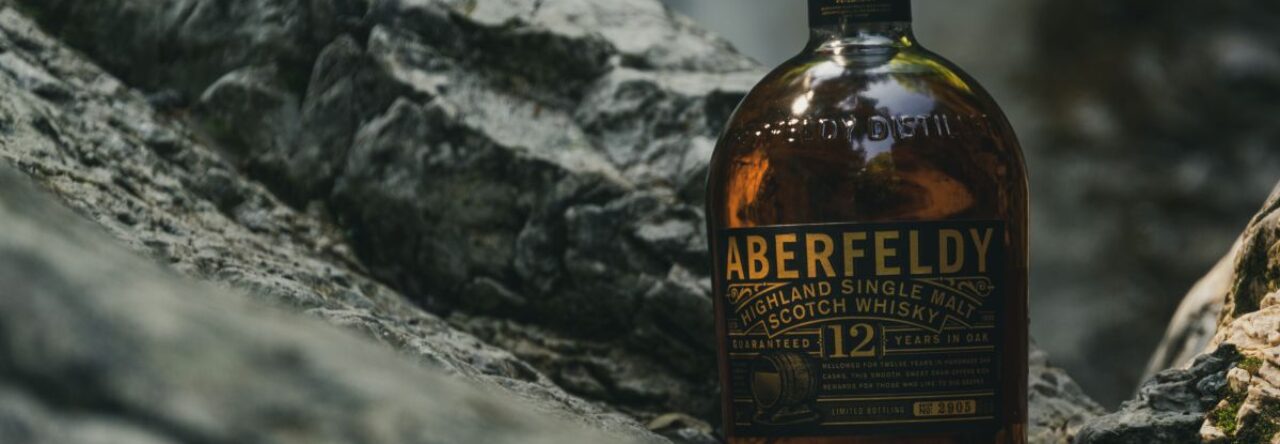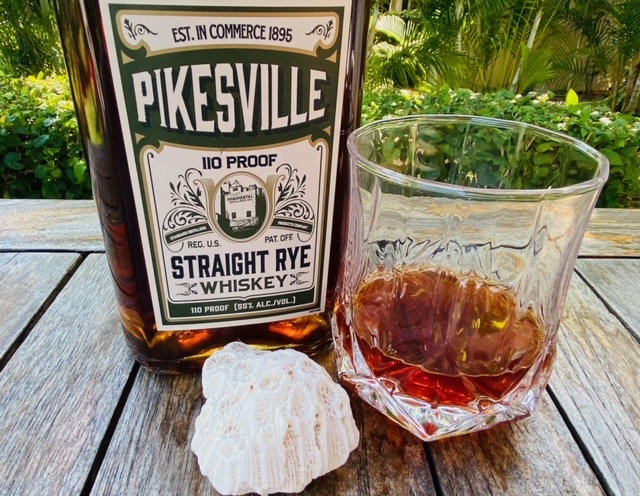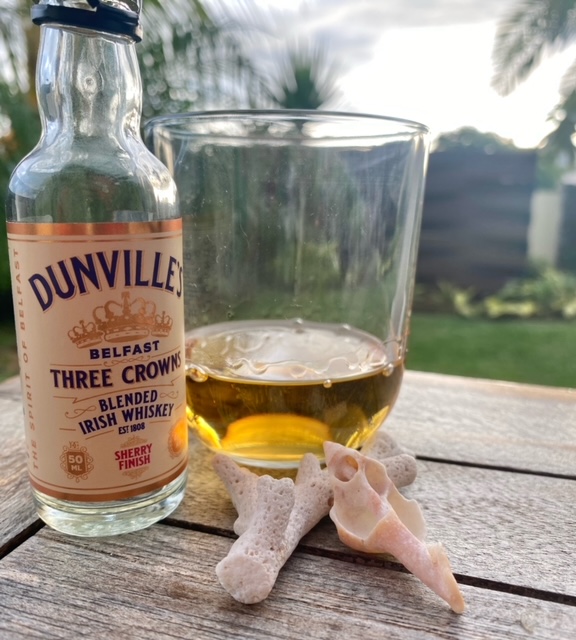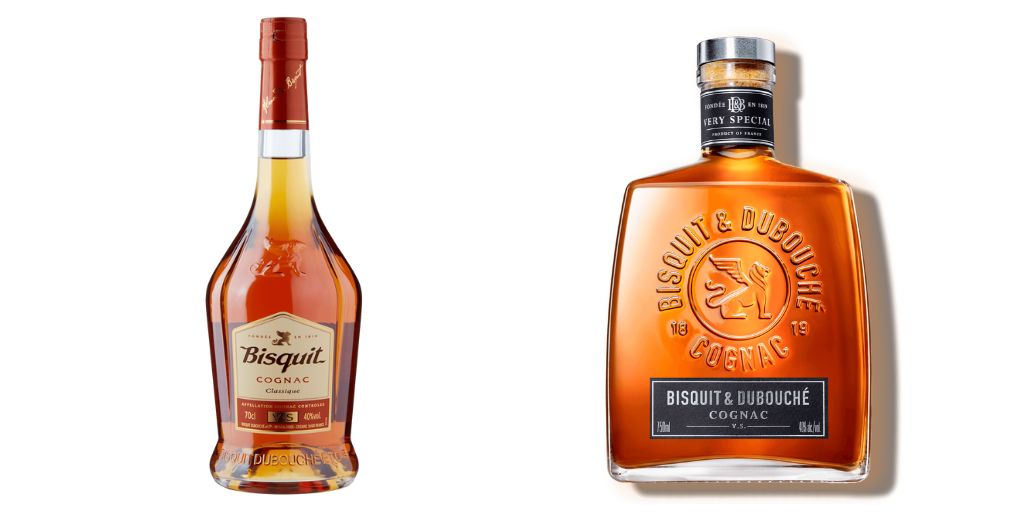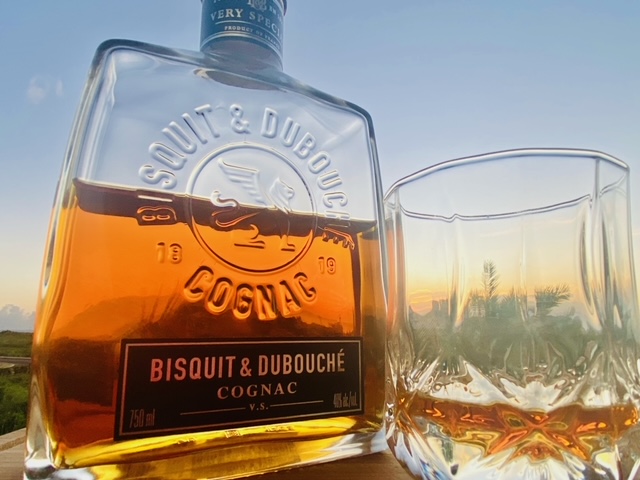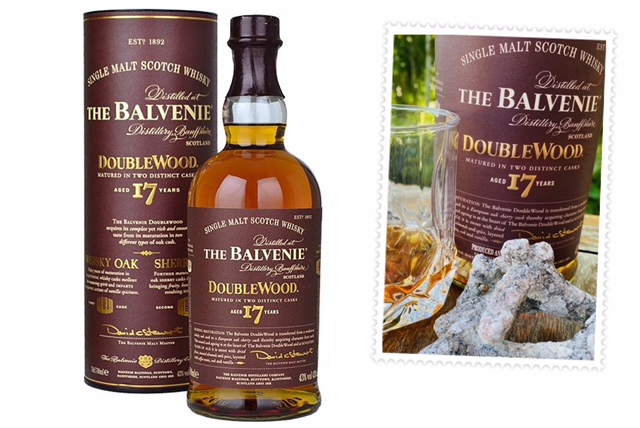
I have not had a glass of Balvenie in ages. The last time I had any Balvenie in my glass was when we did the Balvenie Golden Cask vs Caribbean Cask comparison, and the bottles were empty after that tasting. I looked at my whisky collection for something new to drink and saw the Balvenie 17 year old DoubleWood single malt Scotch whisky, so I grabbed it and am glad I did.
Tag: Rating: Excellent Page 2 of 41
Whisky of the Week review and tasting notes for whiskies that I rated as Excellent. Excellent means that after tasting the whisky, I want to pour a second and third glass. It is whisky that I want to keep on drinking and when the bottle is finished, I will buy another one. See more HERE.
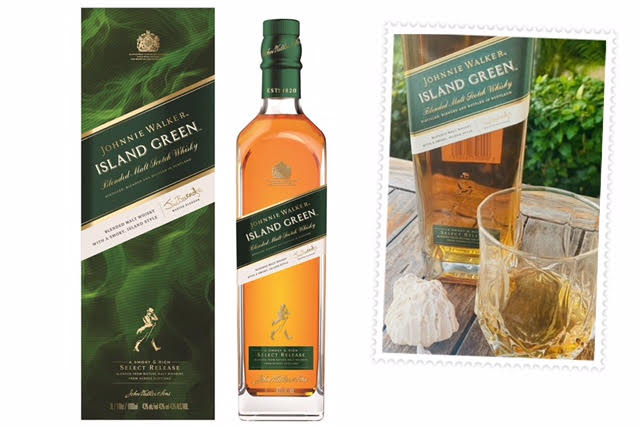
This travel retail exclusive whisky is perfect for my current setting. I am trying the Johnnie Walker Island Green blended malt Scotch whisky here on the beautiful green island of Mauritius.
There is, however, nothing tropical about the Island Green whisky. It is Islay rather than island. But the colour of the box and the coconut trees around me matches, so it is as good an excuse as any.
The Johnnie Walker Island Green is a blended malt whisky and retail travel release. It blends malts from Caol Ila, Clynelish, Glenkinchie and Cardhu. So a malt from each Scottish region. Islay, Highlands, Lowlands, and Speyside. Caol Ila malts make up most of the blend, hence the reference to Island.

When you look at the make-up of Island Green vs Green Label, the Green Label has an age statement. It also blends many more malts, including Talisker, Cragganmore and Linkwood.
The Johnnie Walker Island Green blended malt Scotch whisky was released in July 2016. Because it is a travel retail release, it is available in a 1L bottle. It has no age statement. I shared my bottle with friends on the island, and the tasting notes also included their comments.
Johnnie Walker Island Green Whisky Review
ABV: 43%
COLOUR: Rich gold
NOSE: Smooth, soft peaty goodness mixed with cereals and a green earthy note. Hints of vanilla, wood and light pepper. You can’t miss the Islay base on the Island Green. My friend D said the nose reminded her of her granny’s fashioned emergency kit with rolled-up bandages and disinfectant. The peaty notes are all Caol Ila, but the Cardhu toasted wood, malt and vanilla also have a spot. Rich and delicious.
PALATE: Again, the Caol Ila stands upfront with soft peat, oak and smoke. Hints of oily fish and malt in the background. With a few drops of water, a fruity sweetness comes forward with caramel, marmalade and pepper, probably from the Glenkinchie.
Malty goodness and vanilla with bits of cinnamon. Medium body with an oily mouth feel. A few people around the table got woody notes.
FINISH: Medium length with notes of lemon pepper, oak and drying ash.
RATING: EXCELLENT
What a delicious blended malt. Between the 5 of us, we finished the bottle. The peat is drinkable even for a novice, with enough sweetness to suit many tastes. It is complex enough to entice the serious whisky drinkers in our group but approachable enough for the newbie to enjoy.
An outstanding balance between the peppery notes and fruity sweetness. A great bottle. I will restock this Johnnie Walker as soon as I travel again.
Also Read: Big Peat 26 yo Whisky
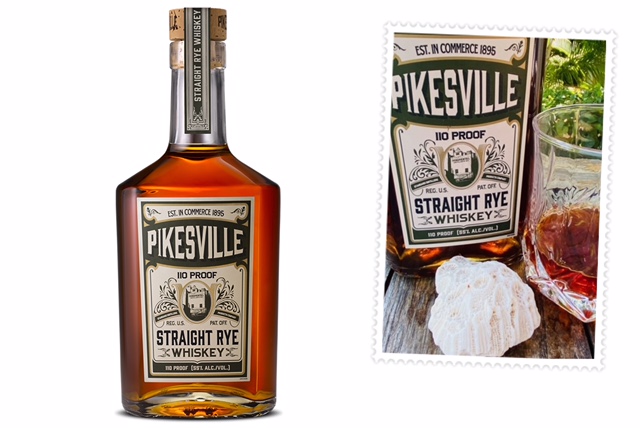
This bottle of Pikesville 110 Proof Straight Rye whiskey has been in my cupboard for a couple of years after the hubby brought it back from a trip to the UK. I have been in the mood for something more spicy after the sweetness of the last couple of weeks, so a rye whiskey is perfect.
Pikesville Rye whiskey was initially produced in Maryland by L. Winand & Brothers Distillery, established in 1895. The brand went through several changes of ownership and survived Prohibition. The last batch of rye whiskey was produced in Maryland in 1972 by the Majestic Distilling Corporation.
In 1972 Majestic Distilling closed down. However, they left enough filled barrels, and the brand continued until 1982. In 1982, Heaven Hill bought the brand. Heaven Hill released the Pikesville Rye in 2015, and it is currently produced at the Bernheim Distillery.
Also Read: Michter’s Single Barrel Rye
Heaven Hill has an extensive whiskey and bourbon brand collection, and the Evan Williams, Rittenhouse and Henry McKenna brands fall under their banner. They are the biggest privately owned whiskey company in the USA.
The mash bill for the Pikesville Straight Rye whiskey is 51% rye, 39% corn and 10% malted barley. Compared to the other rye whiskies I have tried, this is the bare minimum rye to quality as a rye whiskey. The Jack Daniel’s Rye and the Bulleit Rye are considerably higher with 70% and 95%, respectively.
Another different aspect is the higher ABV when looking at the other rye releases. Sazerac and Bulleit Rye has a 45% ABV while the Pikesville rye is at 55% (110 proof).
Pikesville 110 Proof Straight Rye Whiskey Review
The Pikeville Rye is a 6 year old release.
REGION: USA
ABV: 55%
COLOUR: Pale copper
NOSE: The nose is subtle with hints of grassy rye, brown sugar, oak, pepper and baking spices. Hints of cherry and liquorice in the background. A whiff of alcohol on the first sniff, so let it stand a few minutes.
PALATE: The Pikesville Straight Rye whiskey starts quite spicy with notes of cloves, pepper and rye spices, but then comes red fruits and cherries with toasted oak. Maple syrup sweetness balances out the spicy notes. Not as spicy or complex as some of the other rye releases I have tried, but it is relatable and easy to drink. A few drops of water cool down the alcohol heat.
FINISH: Medium length with notes of vanilla, cinnamon spice and bits of drying oak. A faint dark chocolate-covered cherry note makes me want to go back to try this rye again.
RATING: EXCELLENT
What a drinkable bottle of rye whiskey. Not quite as spicy as I expected, which is a good thing. I have a sweeter palate, and some rye releases can quickly become too spicy. It does need a few minutes to breathe and a few drops of water to cool down the alcohol heat, but this is an impressive rye.
The Pikesville Straight Rye whiskey retail for around $58. I will pick up another bottle when I travel again.
Also Read: Pike Creek 10 year old Whisky
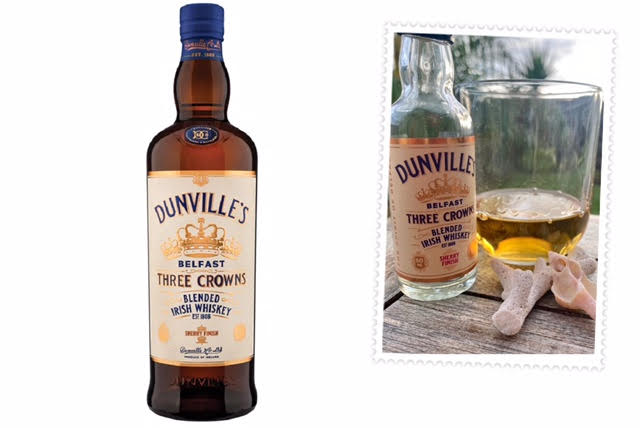
Today I try the last of the Dunville samples and it seems that I left the best for last. The remaining sample was the Dunville’s Three Crowns Sherry Finish blended Irish whiskey. The original Three Crowns brand was introduced in the 1830s and it was around for about 100 years before being discontinued.
I wrote about the history of the Three Crowns brand and the Echlinville distillery when I captured my tasting notes for the 12 yo PX Cask and the Three Crowns Peated whiskey and you can read all about it on those blog posts.
Also Read: Bisquit & Dubouché VS Cognac
This distillery is also not a stranger to winning awards. During March 23, Dunville’s won two major awards at the World Whiskies Awards in London. The Dunville’s 21 yo Palo Cortado Sherry Cask Finish Single Malt was named Ireland’s Best Single Malt and the PX 20 yo Cask Strength, Cask 1644 won Ireland’s Best Single Cask Whiskey award.
The Dunville’s Three Crowns Sherry Finish is a blended whiskey made up of a 4 yo single grain, 10 yo single malt and a 15 yo single malt finished in Oloroso casks.
Dunville’s Three Crowns Sherry Finish Irish Whiskey Review
ABV: 43,5%
COLOUR: Gold
NOSE: Yummy. Red orchard fruit sweetness with bits of malt, raisins, and brown sugar. A gentle floral note in the background with bits of vanilla and nutmeg.
PALATE: Creamy oak, sherry, orchid fruits, nutmeg, and hints of green pepper. A walnut note mixed with some malt and dried orange. Smooth, rich, and bold. Water softens the boldness and complexity. You don’t need to add any water.
FINISH: The finish has notes of drying oak, sherries fruits, vanilla, and pepper. Warming you from the inside out. Long and lingering.
RATING: EXCELLENT
The Dunville’s Three Crowns Sherry Finish is a lovely release! Rich with a chewy mouthfeel that will be ideal for winter. Perfect for the sherry-finish whisky enthusiast. I enjoyed it more than the Peated and the 12 yo PX cask whiskey.
It is the bottle I will buy for myself and would encourage you to try. Serve it in a cognac glass on a winter’s evening next to a camel throne fire. A lovely sipping dram.
It is available in South Africa. I saw it at WhiskyShop and it retails for around R1100 as well as at Cutler Drinks.
Sample disclosure: I received this whisky from the Truman & Orange team. The review and tasting notes are my own honest, fair and independent thoughts about the whiskey.
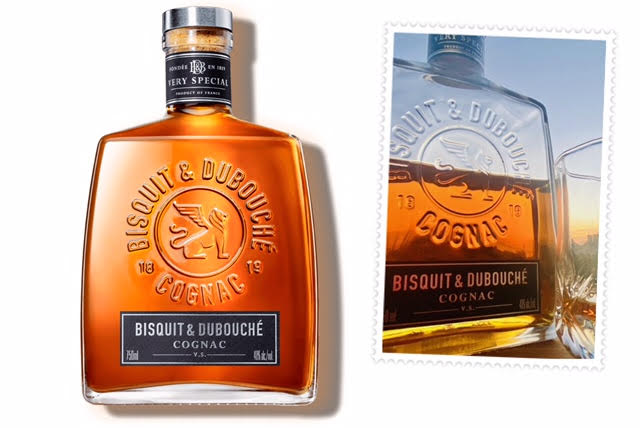
A fun change of pace today, I get to look at the Bisquit & Dubouché VS cognac from the Campari Group. I tried this cognac a few years ago when it was still part of the Distell stable. I used it in an apple cider cognac cocktail then. It was a nice enough cognac for cocktails, but I found it slightly too spicy.
Alexandre Bisquit (born 1799) came from a long line of distillers. He founded his distillery, ‘Maison Bisquit’, in 1819, and the brand has its home at the Château de Lignères by the banks of the Charente River.
Adrien Dubouché went into business with Alexandre Bisquit in 1846 after marrying his daughter. A great painter and bohemian at heart, his artistic flair perfectly matched Bisquit’s practical mind.
The company flourished and, in 1966, was acquired by Pernod Ricard. It was one of Winston Churchill and King George IV’s favourite cognacs. Distell bought it in 2009 and sold it to the Campari Group in 2017.
One of the most significant changes is the bottle design. From a round bottle with beige and gold labelling, the new bottle is rectangular with minimal labelling and a raised Griffen on the front. The Griffen is a legendary creature with the body and tail of a lion and the head and wings of an eagle and represents the strength of the Bisquit & Dubouché dynasty.
What is Cognac?
Cognac is a type of brandy named after the area of Cognac in France and includes the regions around Borderies, Fins Bois, Bons Bois and Bois Ordinaires.
Cognac production falls under the French-controlled designation of origin (AOC) classification, with production methods and naming required to meet specific legal requirements. Ugni blanc grapes are the most widely used.
The brandy must be twice distilled in copper pot stills and aged in French oak barrels from Limousin or Tronçais. The resulting spirit is called eau-de-vie, which translates to ‘water of life. Cognac matures similarly to whisky, and most cognacs spend considerably longer “on the wood” than the minimum legal requirement.
What Types of Cognac are there?
Cognac does not have an age statement displayed on the bottle like whisky has, but it is classified based on age and quality. There are various categories, three of which we see regularly in SA and one that is rare.
Cognac VS: means “very special”. A VS cognac is aged for a minimum of two years. This means that the youngest liquid used to create the blend was aged in French Limousin oak barrels for at least two years. A VS cognac is ideal for making cocktails and mixed drinks.
Cognac VSOP: means “very superior old pale”. A VSOP cognac was aged for at least four years in French Limousin oak barrels, sometimes longer. It can be blended with older releases to create the taste the blender requires.
Cognac XO: means ‘extra old’ and describes a cognac consisting of spirits that have been aged in French Limousin oak barrels for a minimum of ten years. It used to be around six years, but in 2018 the standard was updated to ten years.
Cognac XXO: means “extra, extra old and this is a new category that was officially added to the description of cognac ages in 2018. To qualify in the category XXO, the cognac must age for at least fourteen years in French oak barrels.
If you spot a cognac with XO and Hors d’Age (meaning beyond age) on the label, the cognac in the bottle is at least thirty years old but can be even older. Some are up to a hundred years old. These are the most rare cognacs around. And the price will obviously reflect this as well.
Bisquit & Dubouche VS Cognac Review
ABV: 40%
COLOUR: Radiant gold
NOSE: Light and elegant with notes of wood and fresh fruit. Soft oak spices and sweetness.
PALATE: New wood, vanilla, red fruits and cinnamon. Subtle, soft and accessible. Hints of pear, brown sugar and floral notes with a light peppery bite. A few drops of water open up the fruity sweetness.
RATING: EXCELLENT
The Bisquit & Dubouché VS is not the most complex cognac but it never claimed to be. A lovely entry-level introduction to cognac that is smooth and well-balanced. I rate a bottle on how long it will be in my collection, and this bottle will be finished quite quickly.
It is perfect for sipping neat or on the rocks but will work just as well in a cognac-forward cocktail. The Bisquit & Dubouché cognac collection includes a Bisquit & Dubouché VSOP and a XO cognac. The range is available in Pick n Pay, Checkers and TOPS liquor stores. The VS retails for R540.
Sample disclosure: I received this cognac from the PR company supporting the Campari Group in South Africa. The review and tasting notes are my own honest, fair and independent thoughts about the cognac.
